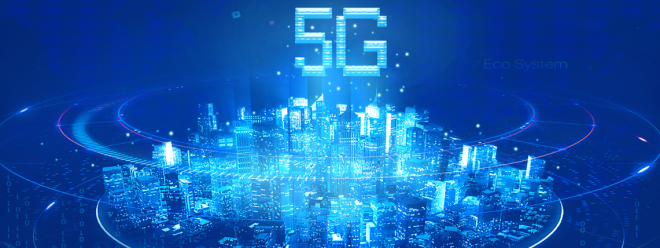How 5G’s low latency will drive new applications and use cases

How 5G’s low latency will drive new applications and use cases

Why is low latency important for 5G?
- Latency is another term for network communication delay, which is the time it takes after sending a message to receive a response.
- A big advantage of 5G networks is that latency is lower than its predecessor 4G, making data transfers between machines and devices more responsive.
- 5G eliminates the latency you may experience on the network. However, this experience is not the same for all users.
5G speed and latency
A user's everyday smartphone app experience depends on speed, not latency. 5G's speed and bandwidth far exceed 4G. 5G is expected to provide average data rates of more than 100Mbps, with peak periods up to 20Gbps. 5G also provides 100 times the network efficiency and traffic capacity.
The problem with 5G speed and capacity is high demand and increased data traffic on mobile networks causing network delays. This is not a limitation of 5G but of the infrastructure behind it, as it relies on cell towers. For example, buildings, trees, and other physical objects sometimes block signal communication with cell phone towers. However, 5G can better manage network resources and improve connections to multiple cell towers.
Latency is no longer an issue for everyday app users today, but that may change once AR and VR become mainstream. The biggest problems with latency occur on devices in applications that require real-time communication.
5G challenges and key use cases for low latency
Low latency is crucial for self-driving cars: when data is sent, it must trigger real-time reactions. To avoid accidents, every millisecond counts. Of course, this depends on having adequate 5G coverage.
The potentially high cost of failure is the same as for critical emergency services because lives are at stake. In these cases, low latency is more important than faster data rates.
5G has challenges: If we look at previous generations of cellular technology, this is not unusual. Issues include public anxiety and cell tower availability. It may take years to achieve full coverage.
Of course, we cannot forget that the supply chain problems caused by the global new crown epidemic have also slowed down the growth of 5G. At the same time, it greatly accelerates the development of new technologies. For example, new services such as self-driving cars rely on low-latency wireless connections with millisecond response times.
What changes will 5G’s low latency bring?
1. New immersive experience
VR and AR enable new ways of working in various verticals, from healthcare to manufacturing. Therefore, they create a completely new experience.
2. New services that change communication methods
Telemedicine transforms real-time communication between healthcare professionals and patients.
3. Massive Internet of Things
The massive Internet of Things (IoT) involves everyday devices in our lives. It has a large number of sensors and devices communicating with each other. These devices are usually cheap, use less energy, and have wide range. For example, our homes or buildings could provide simple on-off options for a range of smart devices.
4. Critical Internet of Things
Critical IoT involves large-scale scenarios. It has fewer endpoints and can handle large amounts of data in more complex situations. One example is traffic safety within smart cities, where failure can lead to widespread complications.
Low latency will have a significant impact on all four areas:
- Internet services that rely on wireless network connections
- labor intensive tasks
- Real-time applications enable near-instant response
- Large scale critical environment
As a result, low latency opens the door to a variety of benefits these new services bring, including:
- Immersive AR and VR experiences
- Multiplayer mobile games
- factory automation
- Telehealth
- Traffic is safer
- Drones that replace humans in service roles (e.g. delivery drones)
- Robots that assist humans
- Smart cities use IoT devices connected to lights, sensors and meters to collect and analyze data
- Critical infrastructure (e.g. smart grids, early warning systems, etc.)
5G low latency real-time applications
As 5G availability grows, many things will change, from gaming and telemedicine solutions to real-time wireless applications for controlling drones and other robots.
Self-driving cars are an example of the importance of 5G’s low latency. When it comes to connected driving, data must be transmitted in real time and reactions must be triggered, as decisions must be made in fractions of a second. Only then can the car stop or take evasive action before hitting an obstacle.
5G’s low latency enables healthcare and telemedicine
Telepresence systems have been used by healthcare frontliners during the COVID-19 crisis. Low latency is more important than ever. First responders must communicate through the first responder network and send vital signs to the emergency room without delay.
When latency exceeds about six milliseconds, human conversations become unnatural and disruptive. Low latency of nearly 1 millisecond enables seamless first responder communications.
Telemedicine has gained traction due to social distancing and quarantine measures, and patients and healthcare providers are still using it. For this to be fully effective, doctors must be able to diagnose, treat and monitor patients remotely in real time. This ability gives patients the best chance of full recovery. It also provides healthcare professionals with the opportunity to save countless lives.
Summarize
- 5G has far lower latency than 4G, which was overlooked in the hype of 5G speeds
- 5G’s low latency is critical for applications that require real-time communications, such as self-driving cars and healthcare
- Low latency will transform critical connected services, including immersive experiences (such as AR and VR) and critical IoT (such as smart city transportation applications).